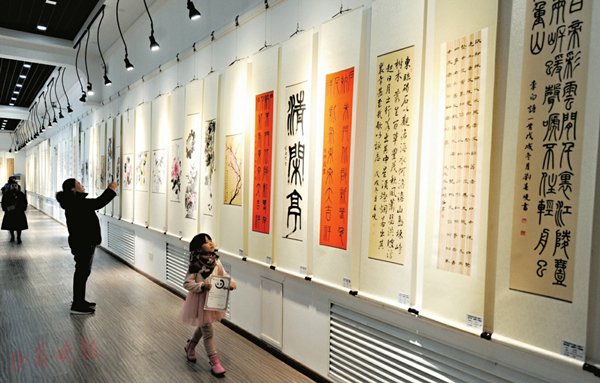Chinese art calligraphy is more than just writing; it is an artistic expression rooted in centuries of tradition, philosophy, and cultural evolution. Unlike ordinary handwriting, Chinese calligraphy transforms the written word into a visual art form that encapsulates rhythm, movement, and balance. Each stroke tells a story, and every character reflects the essence of the writer’s thoughts, emotions, and even moral character. But what truly makes Chinese art calligraphy fascinating is how it balances the technicality of language with the fluid beauty of artistic design.
A Legacy Written in Ink
The origins of Chinese art calligraphy trace back to ancient China, with its earliest forms dating over 3,000 years. Characters evolved from oracle bone script during the Shang Dynasty to the standardized small seal script in the Qin Dynasty. As dynasties changed, so did styles—leading to the emergence of clerical, cursive, regular, and running scripts. These styles didn’t just serve communication purposes; they evolved into distinct calligraphic traditions that shaped the cultural identity of China.
Calligraphy became a key aspect of education, governance, and personal cultivation. Scholars and officials were often judged not only on their intellectual capabilities but also on their command over calligraphy. The strokes, spacing, and structure of characters symbolized discipline, mindfulness, and cultural refinement.
The Soul of Chinese Art Calligraphy
At its core, Chinese art calligraphy is about energy, or “qi.” When a calligrapher begins writing, they are not merely forming characters—they are releasing their inner spirit through the brush. The “spirit resonance” (氣韻生動, qì yùn shēng dòng) of the artwork matters as much as the clarity or form of the words.
This “spirit” is captured through four treasures of the study: the brush (bi), ink (mo), paper (zhi), and inkstone (yan). Together, they form the foundation of traditional calligraphy. Every variation in ink density, stroke pressure, and brush angle contributes to the final composition. The same character written by two different calligraphers may feel vastly different due to the unique flow, tension, and personal style embedded within each stroke.
Major Scripts in Chinese Calligraphy
Chinese art calligraphy includes several script types, each with its own aesthetic and historical significance:
- Seal Script (篆書) – This ancient style features symmetrical and pictographic characters, often used in carving.
- Clerical Script (隸書) – Developed during the Han dynasty, known for its flat and wide strokes.
- Regular Script (楷書) – A standardized form, still used in printed Chinese text today.
- Running Script (行書) – A semi-cursive style ideal for personal notes and expressive writing.
- Cursive Script (草書) – A highly expressive, flowing form that requires advanced understanding to interpret.
These scripts demonstrate the transformative nature of Chinese art calligraphy, where practical writing transitions into artistic expression.
Calligraphy as Cultural Identity
Chinese art calligraphy is deeply intertwined with other traditional art forms such as painting, poetry, and seal carving. A classic Chinese painting often includes calligraphy along the borders, not merely to label the image but to add a poetic or philosophical dimension. Poems written in calligraphy amplify the emotion and depth of the artwork.
This integration of disciplines underscores the philosophy of harmony that defines traditional Chinese aesthetics. In fact, a piece of calligraphy is often judged on how well it harmonizes form, rhythm, and meaning—an alignment that reflects both inner character and cultural values.
A Living Tradition
While deeply historical, Chinese art calligraphy remains vibrant today. Schools across China still teach the art, and contemporary artists continue to innovate within its framework. Exhibitions, competitions, and workshops are held globally, attracting enthusiasts and scholars alike.
International interest in Chinese calligraphy has grown, with many artists from different cultural backgrounds studying and practicing it. Calligraphy has also found a new presence in modern design, fashion, branding, and architecture, showcasing its timeless relevance. Despite digital communication dominating modern life, the allure of brush and ink remains strong, precisely because it is tangible, expressive, and rooted in personal effort.
Learning Chinese Art Calligraphy
To learn Chinese art calligraphy is to embark on a journey of patience, observation, and discipline. It requires more than simply mastering brush techniques—it involves studying traditional scripts, appreciating historical works, and understanding cultural contexts.
Practice often starts with copying the works of great masters. These ancient exemplars serve as templates through which learners can absorb structure, spacing, and stroke rhythm. Eventually, students develop their own styles—just as the masters once did—contributing to the living continuum of the art.
Whether practiced for spiritual reflection, cultural connection, or aesthetic pleasure, calligraphy provides a meaningful path of personal and artistic growth. It teaches focus, cultivates respect for tradition, and offers an intimate engagement with Chinese language and thought.
Final Thoughts
Chinese art calligraphy is a captivating union of visual beauty and linguistic depth. It is not only an artistic discipline but a mirror into the cultural and philosophical underpinnings of China. Each stroke serves a dual role—conveying literal meaning while expressing artistic emotion.
This is why Chinese art calligraphy can indeed be considered both a visual masterpiece and a language in motion. It dances between form and spirit, echoing the legacy of dynasties and the essence of the individual. Whether viewed in ancient scrolls or practiced by a modern hand, calligraphy continues to inspire and evolve, upholding its place as one of the purest expressions of Chinese artistic tradition.
Related Reads
- Advocate on Record Supreme Court – Why Lex Confiance India is Your Trusted Legal Partner
- Why Investors Are Choosing Private Mansions in Dubai
- Traveling Together: Why Choose Group Umrah Packages For Your Holy Journey
- Women returning to work: Get clear guidance from the right experts
- Importance of Keyword Research in SEO in the Philippines



